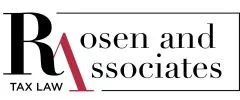The Canada Pension Plan (CPP) is a contributory social program whereby Canadian workers, employees, and self-employed individuals, contribute a percentage of their paycheque into a larger fund, which is then paid out to individuals once they reach a certain age. Beginning at age 18, Canadian workers begin contributing to CPP, but are only required to contribute if they are making more than $3,500 annually. Canadians become eligible to receive CPP payments at the age of 60, or alternatively can delay these payments until age 70. It is important to note that CPP payments depend entirely on historical contribution to the plan. Therefore, the amount of CPP received per person is dependent on annual salary earned, as well as the length of time one has been contributing to the fund.
The contribution rate for Canadian employees is currently set at 5.95% of personal earnings for the 2024 year. These contributions are deducted directly through payroll, and your employer matches your 5.95% contribution, for a total of 11.9%. On the other hand, self-employed individuals are required to contribute the entire 11.9%.
How Much Can I Contribute to CPP?
As of 2024, Canadian workers are able to contribute up to 5.95% on a maximum of $68,500 made annually towards their CPP. This number represents the "first earnings ceiling". It is important to note that the first $3,500 is the basic exemption amount, and therefore, an employee, or self-employed individual contributes 5.95% or 11.9% respectively, on $65,000 made annually However, as of January 2024, the government has introduced a new level of CPP contributions known as the "second earnings ceiling". This provides Canadian workers with the opportunity to contribute a higher percentage of annual income to their CPP, thereby ensuring greater financial security upon retirement.
CPP Enhancement and Second Additional CPP Contributions
In 2019, the government introduced the first CPP Enhancement. This raised the contribution percentage rate from 4.95% to 5.95%. This change provides working Canadians greater financial stability throughout the entirety of their retirement years. A further change was implemented in 2024, when the government introduced the second additional CPP contributions (CPP2) to provide even more financial security. Canadian workers who make high annual salaries now have the opportunity to contribute up to 4% more annually to their CPP fund.
What is the Second Earnings Ceiling and CPP2?
As of January 1, 2024, the government introduced the second additional CPP contributions, or the "second earnings ceiling", to contribute to the CPP on their earnings over $68,500 a year. The second earnings ceiling for 2024 is about 7% more than the first earnings ceiling, and contributions are capped at $73,200 of annual income. This means that Canadian employees, and self-employed workers are contributing an additional 4%, and 8% respectively between the first, and second earnings ceiling.
Canadians whose annual wages are more than the first earnings ceiling, but fall below the second earnings ceiling, will also contribute an additional 4% on all income above $68,500, which is again matched by their employer. Similarly, self-employed individuals making above the first earnings ceiling, but below the second earnings ceiling, contribute 8% of annual income above $68,500 to their CPP fund.
How will CPP2 Benefit Employees, Employers and Self-Employed Individuals?
The Canadian government introduced the CPP2 enhancements in an effort to ensure that Canadian workers have greater financial security upon retirement. As the cost of living and inflation rises, the government understands the need to ensure workers will be able to live a stress-free retirement life. Therefore, providing Canadians with the opportunity to contribute more now to their retirement fund, ensures that Canadians will not have to worry about finances after they retire. On average, the CPP2 enhancements allows employers the ability to provide employees with an additional 50% more benefit income toward their fund. Additionally, employees and self-employed individuals have the opportunity to contribute 50% more to their retirement fund. These additional contributions can ease Canadians minds as they enter into all the uncertainty that retirement brings.
Benefits of the Second Additional Canada Pension Plan (CPP2)
The introduction of CPP2 has many benefits for Canadian workers outside of financial security that must be considered. These include:
- Greater financial security during retirement years;
- Although workers set to retire in 40 years benefit the most from this change, even those workers who are able to contribute more now will receive more upon retirement;
- The contribution of more funds, means more funds received in return;
- CPP2 contributions are tax deduction claims on Income Tax and Benefit Returns;
- The maximum annual contribution for base CPP is $3,867.50 per person. The CPP2 contribution adds up to an additional $188.00 per person; and
- The CPP2 contributions will continue to increase in the coming years, allowing even more financial security to Canadian workers upon reaching retirement age.
To learn more about the CPP changes, visit the Canada Revenue Agencies (CRA) website here: CRA CPP2 .
The content of this article is intended to provide a general guide to the subject matter. Specialist advice should be sought about your specific circumstances.
We operate a free-to-view policy, asking only that you register in order to read all of our content. Please login or register to view the rest of this article.


